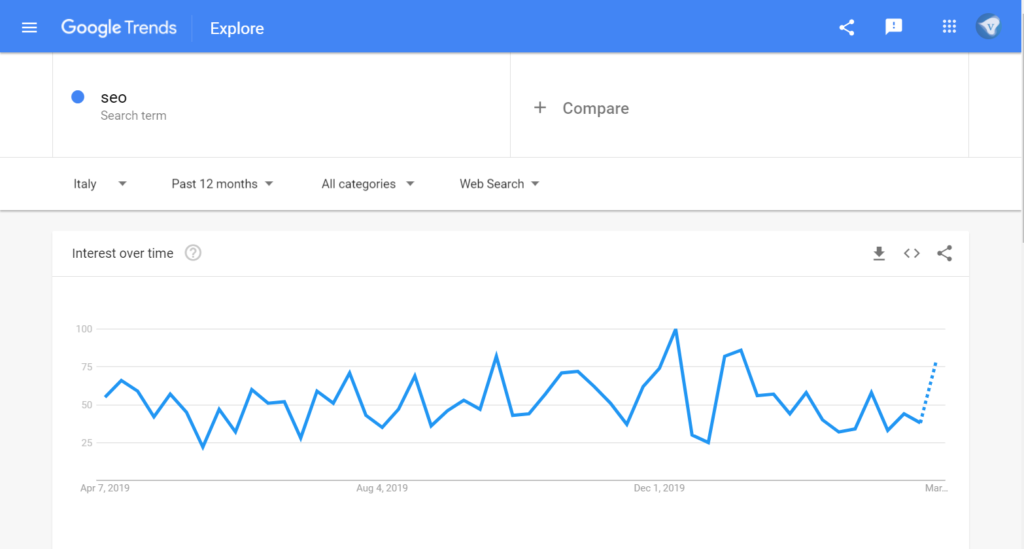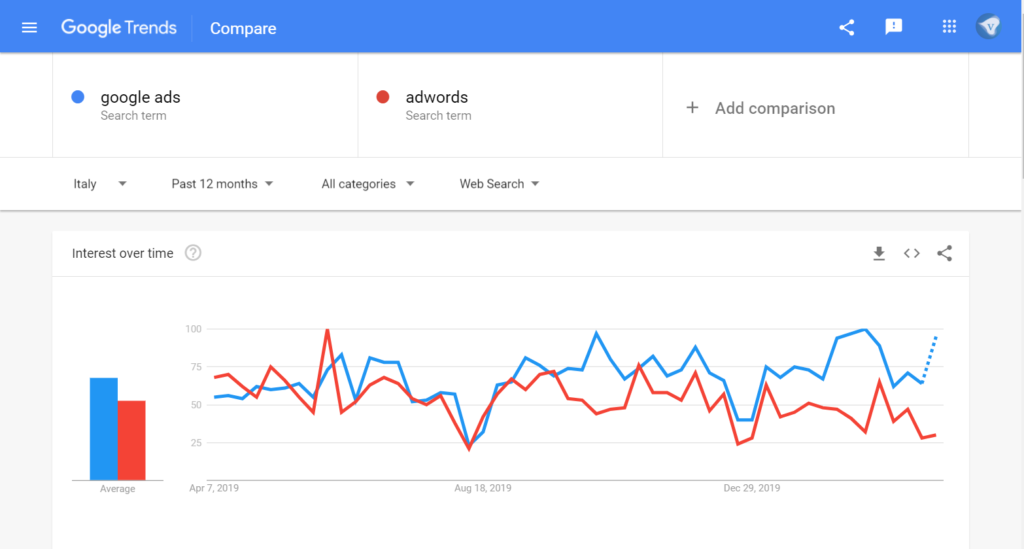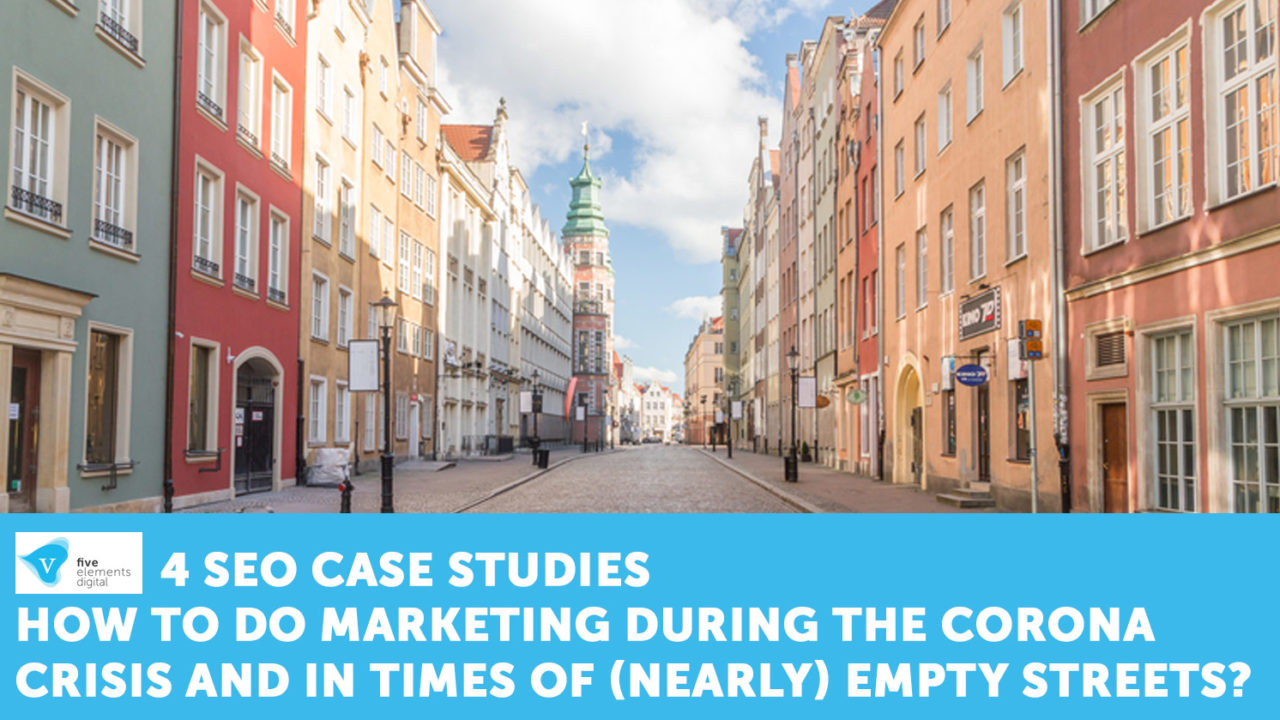
To be honest, I admit my plan after launching this website was to brag a little bit about five elements digital, especially our SEO work, how wonderful our clients are doing with us, and what great of a growth they enjoy. Overall, we just partnered with the European Search Awards, which was to be held this year in May in Bucharest, so it was also urgent. I did not plan to launch it in the middle of this Coronavirus outbreak with struggling people and business everywhere – including some of our clients. So, we needed to re-assess the situation. The site was still launched, because it was just embarrassing for an enterprise SEO Agency to not have an own website about itself. So, we still and quickly launched the website, and I admit, with stock photos in the office section, because right now, we cannot make pictures in our office. The all of us cannot wait for the times to change that ?
Thus, as it turns out, my »Hello World« post will not be about us, but about what is happening to more or less the all of us now – and what you and your business could do – at least when it comes to marketing in the time of coronavirus, quarantine and lockdown.
What we are seeing now is a massive change in habits – at least temporarily, which is way bigger than the surprisingly and unprecedented trend in toilet paper, but also basic necessities such as bread and a hype for disinfection solutions
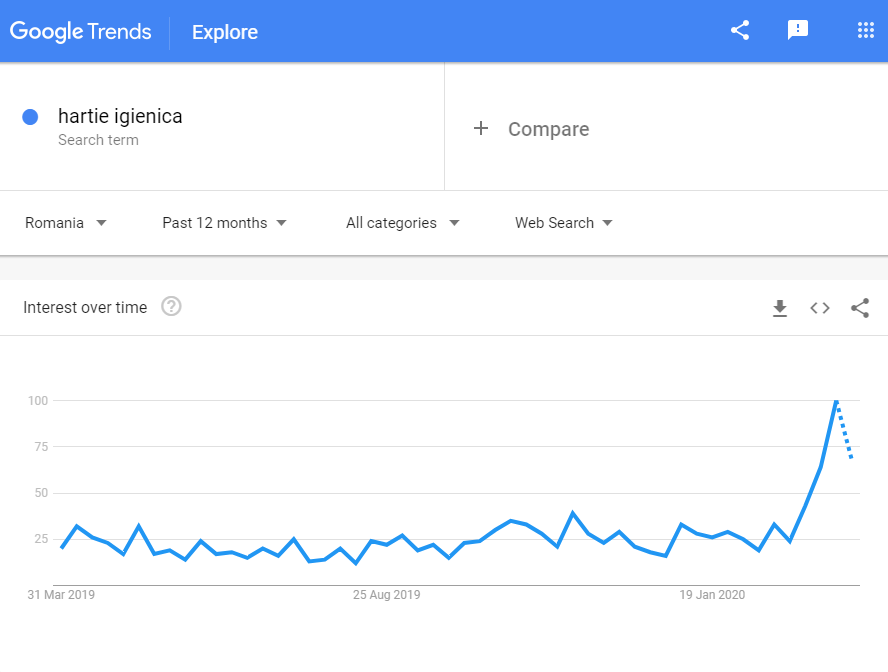

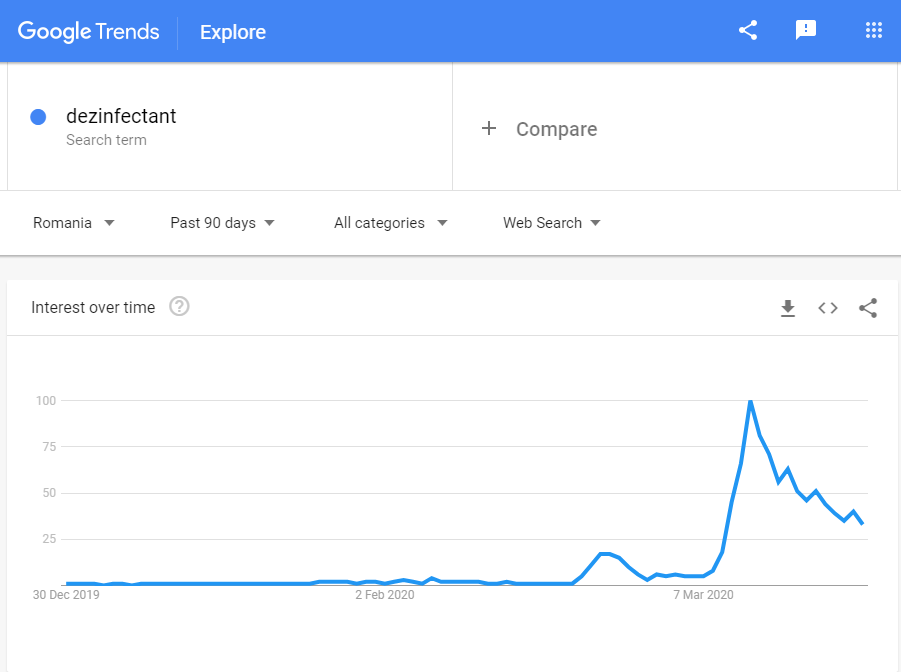
People are also changing their news consumption and brand preferences:
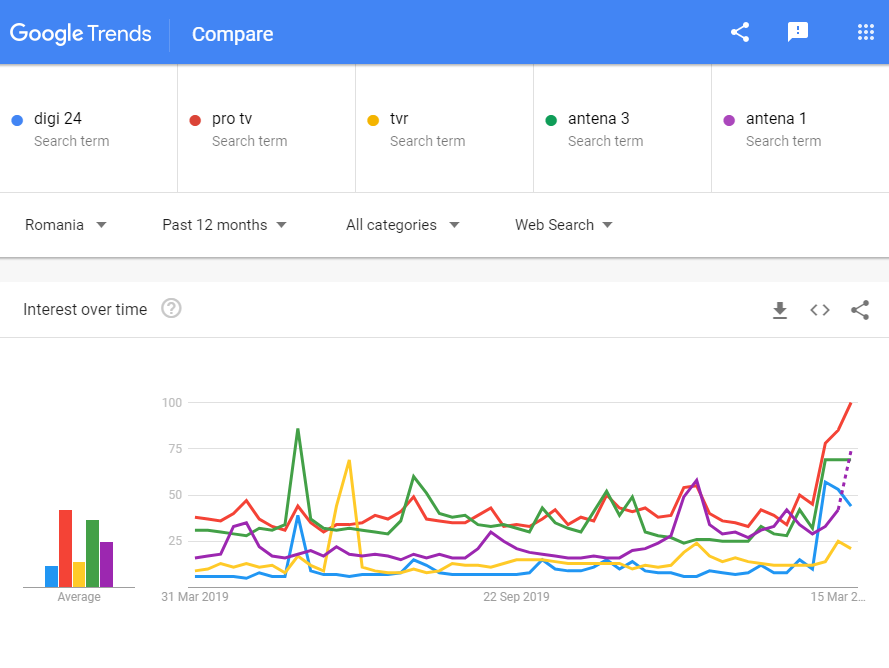
If we can believe reports from China, in the first phase the need for hard news multiplies, to decrease then and to give way to infotainment again, as people start to get overfed with serious news about a situation they are experiencing themselves anyways. Still, screen time is on the rise and the demand for content also will be.
So, as it seems at least some things are working, and publishers ought to do well? Not quite. Publishers rely on advertising revenue, and most advertisers in times of closed shops and lower consumer demand do not have anything to advertise. The Romanian publisher Association BRAT already asked the government for help to save the industry, otherwise, serious financial problems, maybe even bankruptcies are foreseeable. The companies who are doing online-only, are better off here because they can compensate lower prices with higher traffic volumes.
But the lockdown does not affect retailers, or restaurants only, which took an unprecedented hit:
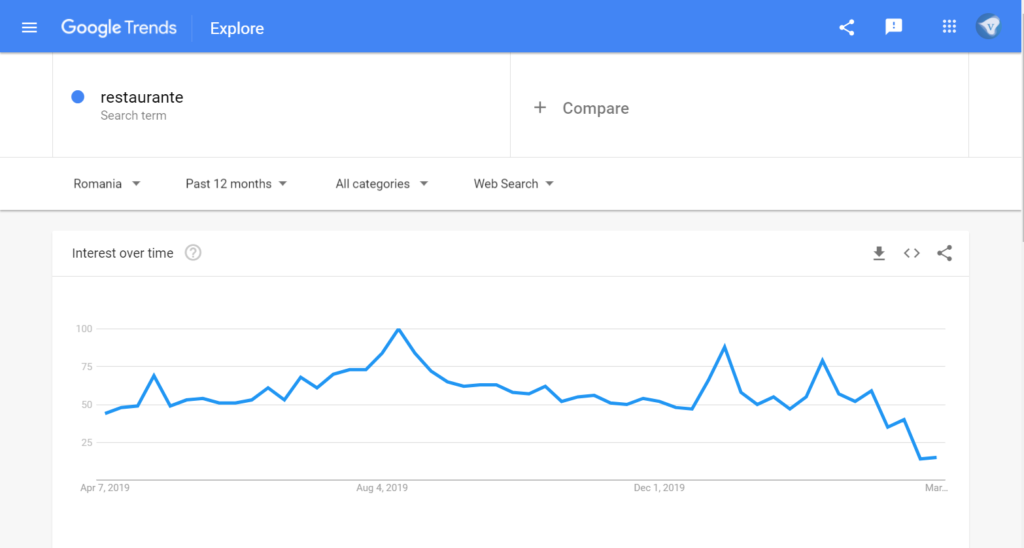
No, people start also replacing other basic services, such as haircuts:
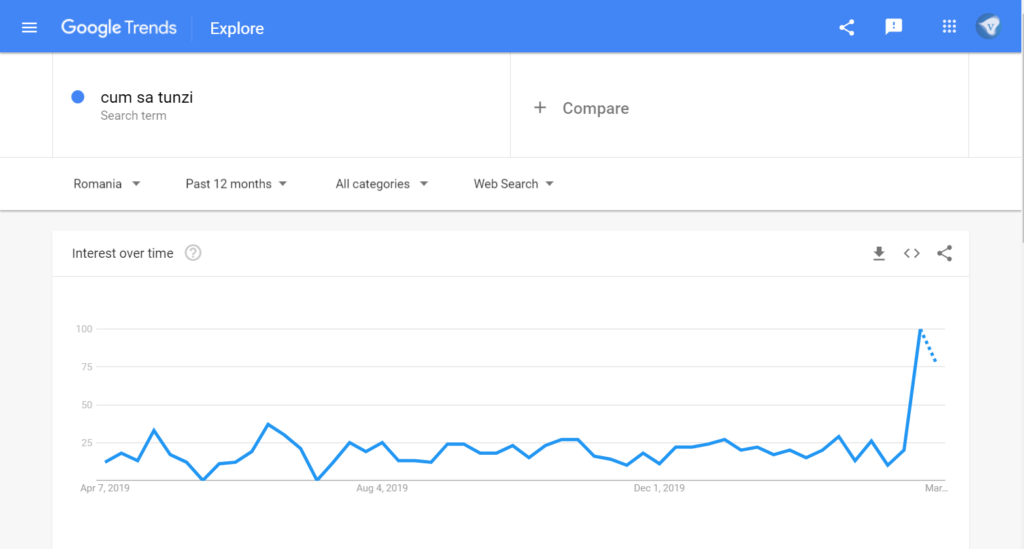
In conclusion: most businesses are affected in some way or another and in the business world spirits have been going down for some time now. Abruptly, the HR market took a dive to an extent, usually to be seen only between Christmas and the New Year. In other words: spirits are really low in the business world.
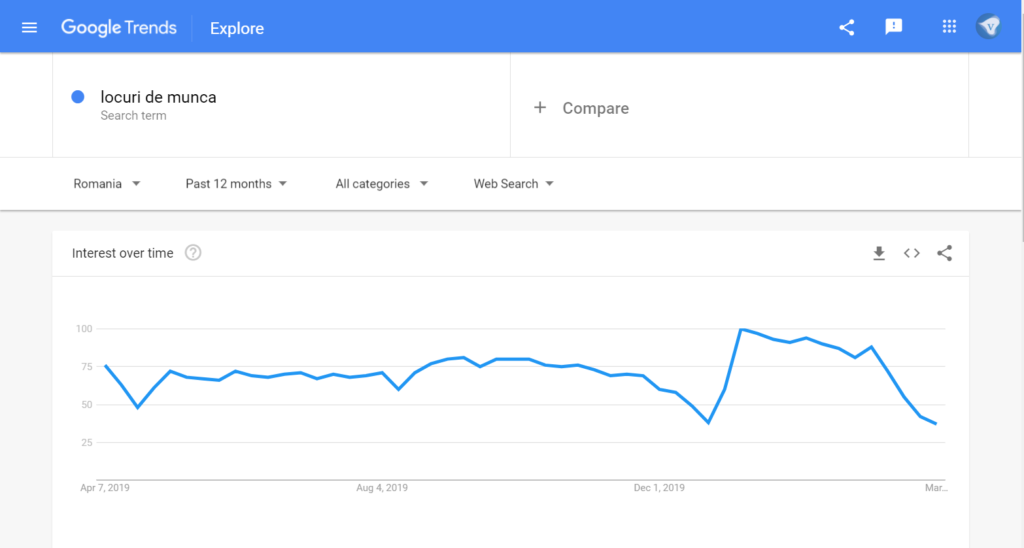
Many advertisers (not all, some are having a real boom right now!) in this context put their ads and budgets also on hold – for good reasons. But also, other marketing activities are often put on hold.
So, some days ago my partner from overseas asked me if we got already some case studies on how to do marketing in the times of COVID-19, especially for SEO, to sustain a pitch. Coronavirus just started to spread, and they are in the first phase.
Some clients there had put a well-justified stop on their Google Ads campaigns. What else would you do when your offline business is closed? Also, you can switch them back on any time you are ready to resume your business and clients ready to come back visiting you. In their case, I had recommended the stop myself.
As for SEO, the question sounded strange to me. How should SEO work in times of corona? Obviously, from a market share perspective, it works the same as always, maybe even better, because others take a break or have to give up. As for traffic and sales – this depends on how your business is responding to corona anyways. If people stop buying now from AdWords or Facebook, they will not buy from SEO either. But still, there are some important differences between the channels. You can reasonably expect the SEO work you will do now to pay off not only now, but also in 3, 6, 12 months – and anytime the whole pandemia stops. Ads spend now will be of some, but little effect in the future.

So, my recommendation was and is for everybody who does not plan to go out of business for good to continue SEO, in order to grow or at least to keep your current standings. Because, in short, the natural trend for a website in Google Search for a website is the same as for a dead fish in the stream: going down, unless you don’t actively work on progress. For some of our long-term clients, we even assure a basic SEO maintenance program for free or at largely reduced rates (those are these with entirely closed shops now, which otherwise would run in the minus) to prevent that they lose the hard-earned market share and to help to get us all over the moment together.
Nevertheless, to get back to my partner form overseas, all corporate is the same, they want some data to justify their decisions, and thus needed Coronavirus SEO case studies, so what else to do as to deliver them such?
Coronavirus and COVID-19 Safety Measures and Marketing
Marketing is a support function for sales, and sales obviously depend on many factors, most of them not related to marketing: needs, purchasing power, right now, consumers focus on the strictly necessary because they have less disposable income, are unsure about their future and/or expect prices to go down. Some industries will see a quick recovery, because consumption is only postponed, but not definitely canceled (the visit at the dentist, for example, will most probably be done after lockdown is over, but the revenues from the Easter Holiday season for the HoReCa people is and will remain lost).
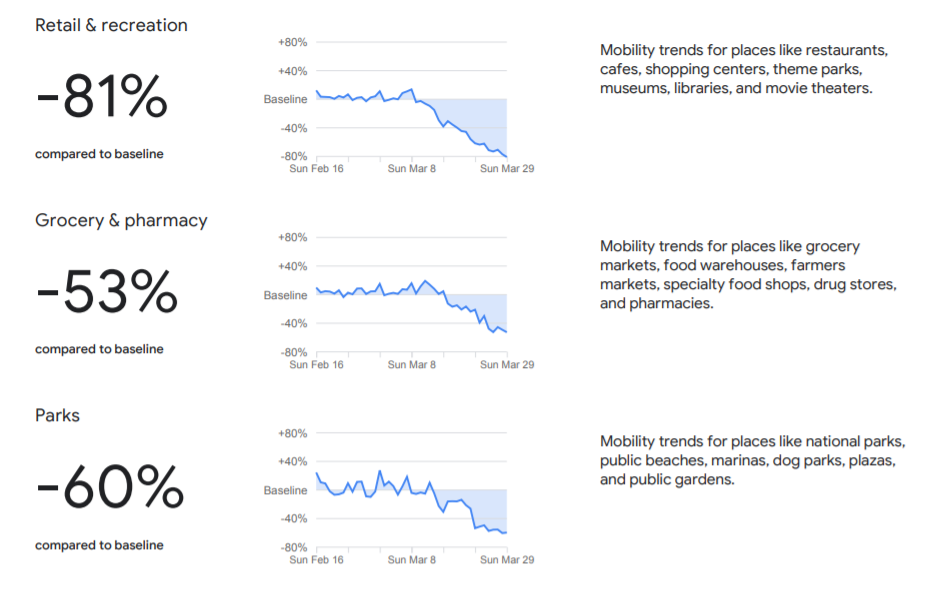
Depending on the country you live in this may have started earlier or later. I personally live in two countries (Romania and Russia) and have family in three (Germany), while our business works literally around the globe (Eastern and Western Europe, USA, Australia). So, I evidenced the whole story from several different angles, both on the human level, as well as in business contexts. Most things are in common though and happen/start only at different points in time.
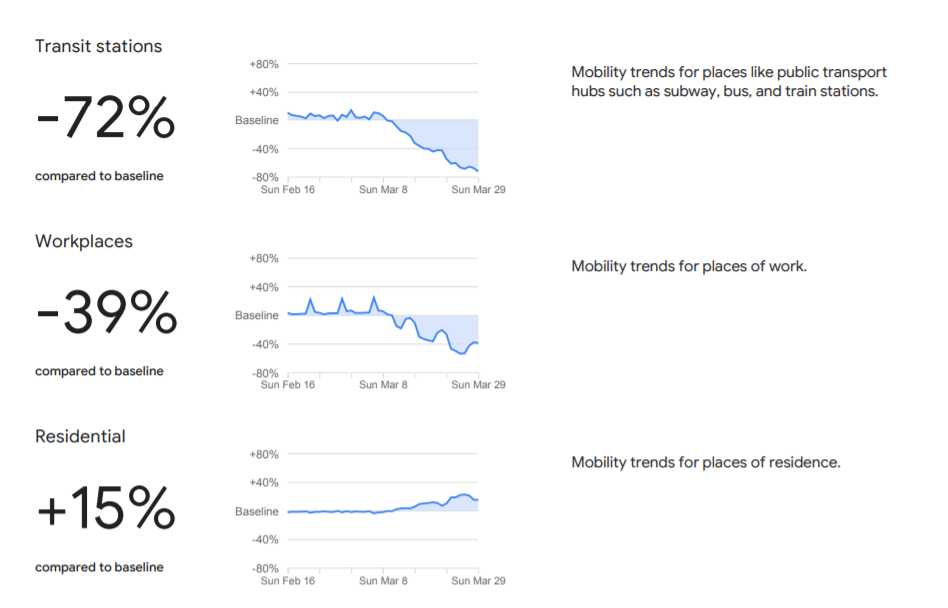
So, if you enjoy browsing data and charts, take a look at Google’s mobility reports, which just today appeared. But, to sum it up from what I have seen so far:
- Most people stay at home or at least limit going out to the strictly necessary minimum (voluntary or not)
- Public life and service is reduced to a minimum
- Whoever can, works from home, however, a large amount of businesses were also forced to temporarily close or reduce the activity
- Whoever can, tries to shift operations from offline to online
- Work meetings for white-collar workers now happen on Zoom or Google Hangouts
- First restaurants try to jump on food delivery
- More retailers try to sell online
- Some real estate agents were reported to walk prospects virtually through apartments
- Some simply do nothing and just close and/or reduce costs
Now, let’s focus on the businesses which may boom now, even profit from this situation.
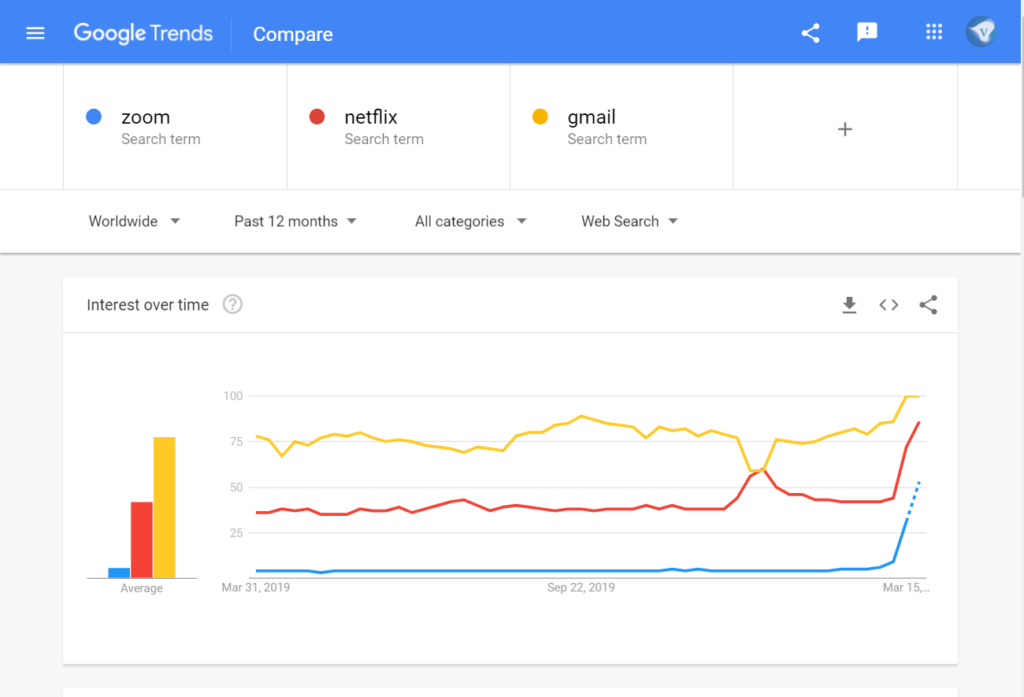
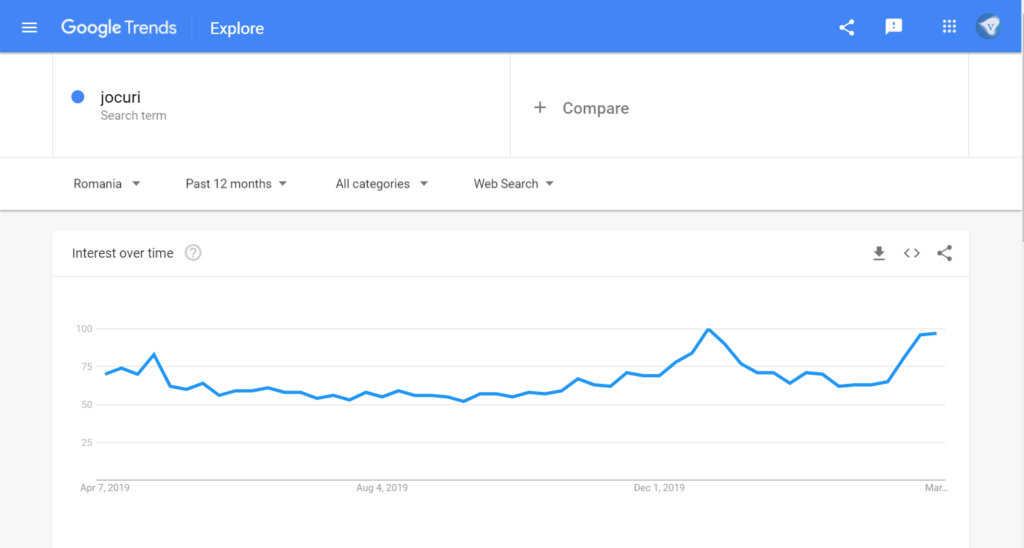
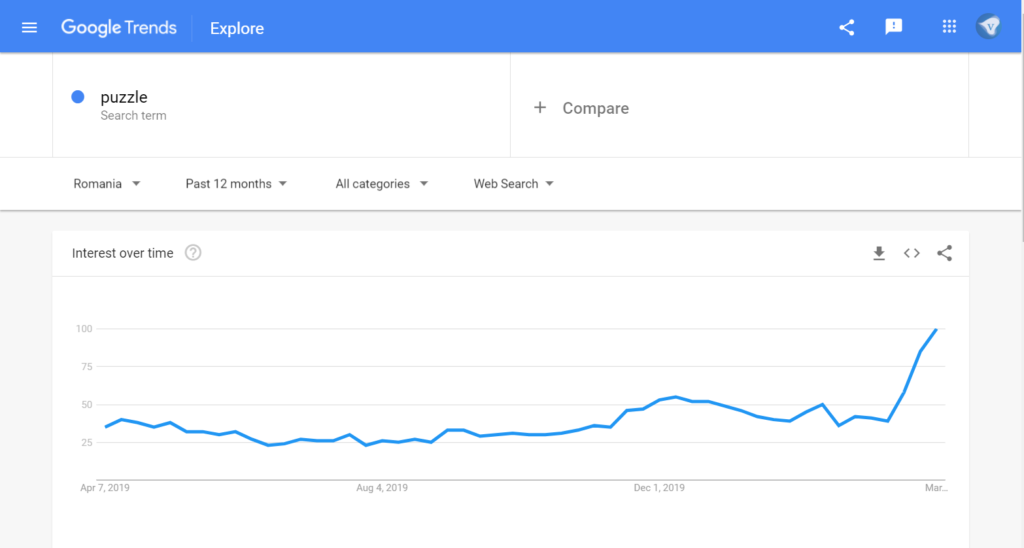
Online collaboration tools are obviously trying to use the trend. Also, online entertainment enjoys unusual high demand now. This seems at first like a trivial observation, but if we factor in that the digital workers already regularly were working with these tools, the story of what may happen next is that seemingly a new segment of the population is starting to use these tools. What I expect from that is that more people will start to use online productivity tools on a regular basis, entire new industries start now to embrace or increase online operations and for me, it is pretty sure that some of these newly formed habits will stick.
A good example was the case of Adidas in Germany. Some businesses, among them Adidas recently announced they will stop paying rent because of Coronavirus and »Adidas spokesman Ranau« mentioned in this context that »its sales online generated only 15% of group earnings, but this form of retailing« would now be accelerated “intensively.” Meanwhile, Adidas paid its rent, but the interesting thing here is, that large corporations now start to realize the importance of online operations. From the consumer side, online shopping is clearly on the rise. Also here we can expect a change of habits – after many experiences for the first time the convenience of getting their groceries delivered home, they will not want to miss that in the future either, at least for non-perishable and heavy items such as detergent, beverage or toilet paper =)
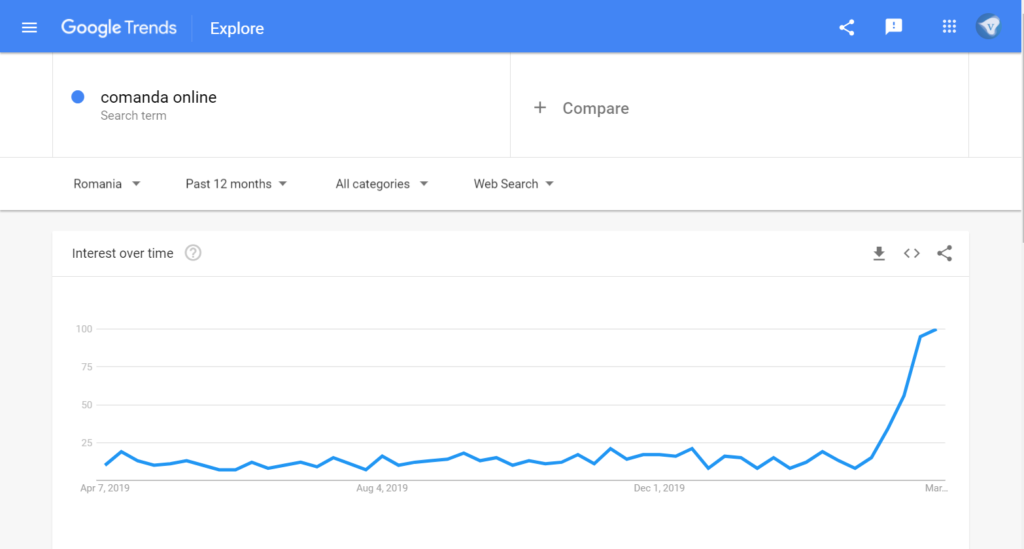
Corporations are known to act slowly, so it may take some time for this strategy to manifest, but on the other hand, after corporations took a decision and adopted a strategy they do it with all their resources and power their machinery has to offer. This is by the way also the thing I like about working with enterprise: all this long waiting and time of preparation is rewarded with results on scale. Long story short, I expect a huge push and acceleration for digitalization.

Education is another sector that now starts to embrace eLearning much more than before: regular schools, including primary schools and universities, try out online teaching (at least here in Moscow). And even small, local event organizers (such as Book shops) started to move their events and seminars online – some of them with unexpected positive feedback. So, for example in the case of a small London niche topic books store, which after putting its events and seminars online received positive reactions from over the world, that finally, these events are accessible to everyone. Initially, these events were obviously meant to keep the offline business afloat and profitable, and to bring people into the store during the time of Amazon. But I would not be surprised if the chance to reach a national if not the global audience will make them continue or offer at least hybrid forms (offline + online).
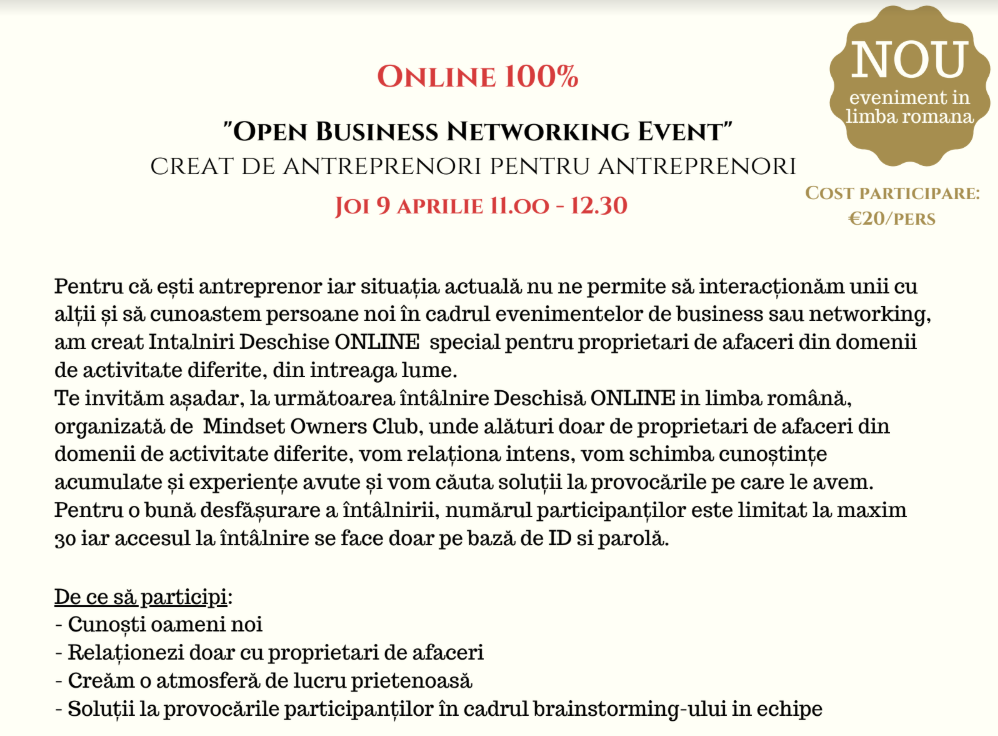
So, these are the general trends I am observing so far. Now let’s see our own experience:
SEO Case Study: Medical / Private Hospital Chain

After the Coronavirus outbreak and introduction of safety-measures demand dropped by 50%. This is logical because clinics had to close or to treat just urgencies. This chain of premium clinics does so, this is why they still have some demand left. At the same time, we grow rankings and market share as usual. The strategy here is to use the time while others are inactive to expand market share. The majority of customers will not definitely cancel their treatments, but they only postponed them. Thus, the strategy is to have an even bigger share of the pie when demand resumes.
SEO Case Study: HoReCa Retailer with Complementary Online Shop

Here we have the online shop of an HoReCa and for professional cooking equipment retailer. HoReCa is obviously locked down as restaurants are closed and many businesses will face difficult times also afterward. YoY demand is well grown (we took on the client in September) and grew it by 300%. In March demand started to decrease – but with growing SEO visibility further, SEO continues to uphold traffic which seemingly grows as also consumers start to resume their buying, even though, they do so at home. So, here the opportunity is to shift the focus to consumer needs to keep sales running.
SEO Case Study: DIY / eCommerce Online Store

Here is a niche online-only store for some DIY components. Immediately after the crisis started, traffic went deep in the red both year-over-year and month over month. As we start to work on increasing market share we see in recent days traffic, i.e. consumer demand growing back. At the beginning of the crisis, consumers seems to were focused on basic necessities only. Fear and uncertainty about the future may have had a say in this. However, it seems, people are resume their demand slowly during lockdown or maybe start even using the time to improve their homes.
SEO Case Study: Petshop / eCommerce Online Store

We grow this online-only petshop for one year now. Back then it had less than < 300 organic visits per month, now it has over 50k organic visits per month. Demand in February and March is traditionally high because it is the season for de-parasitation, but online demand may be even higher now as probably many visits to the VET also are postponed. Delivery in times of quarantine works. Visibility is growing further.
Overall, unless you expect to go out of business, there are some ways to use this Crisis:
- If you see falling demand – probably it is still good to invest now in SEO to gain market share while other businesses stay idle or will fail. If you do nothing your market share will fall over time, especially as there is a new wave of digitalization to be expected, so online real estate and visibility will be harder to earn in the future
- If you see constant or growing demand, keep working on SEO, maybe now more than ever, because other businesses will move their operations online, too
These are obviously convenient words, from an SEO agency. However, it is what I see if I try to take a glimpse in the future, buy exploring search trends in Italy, which is currently way ahead in the crisis and where lockdown prevails already longer than in most other parts of the world
